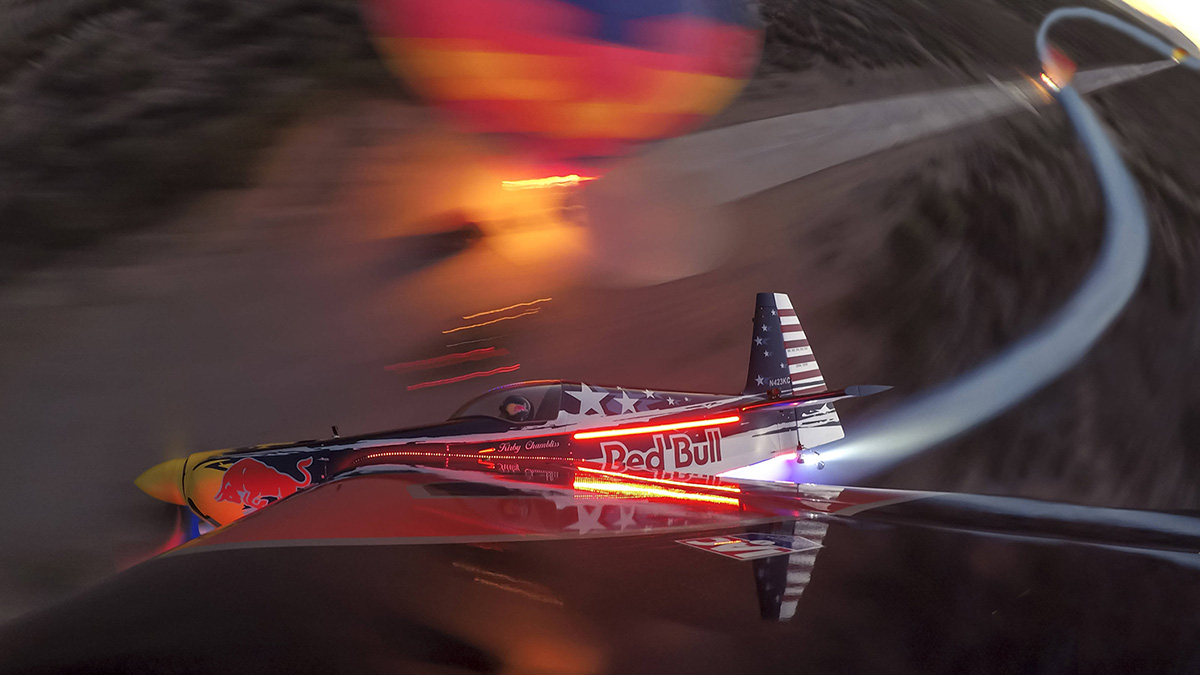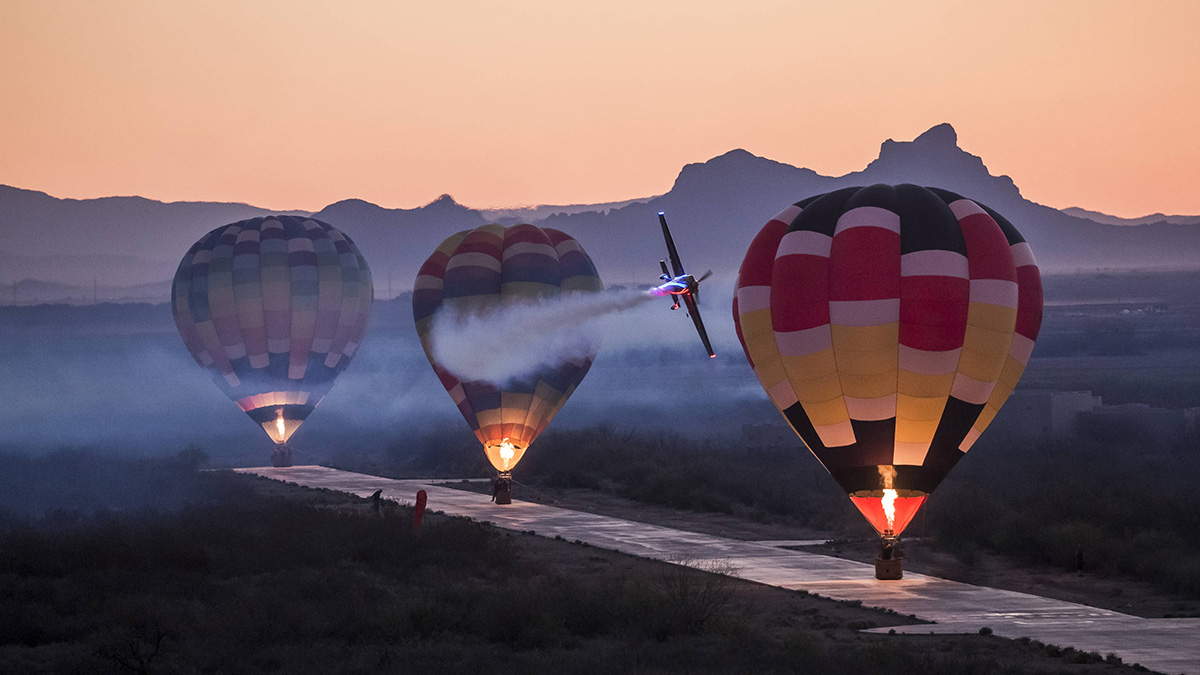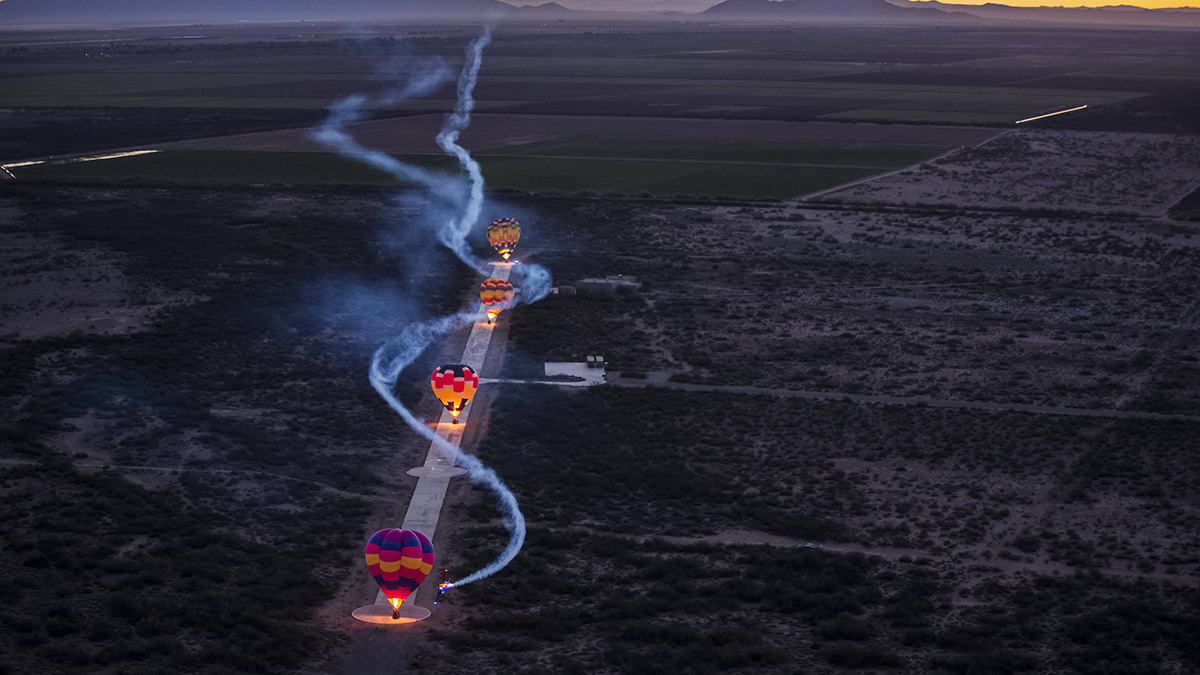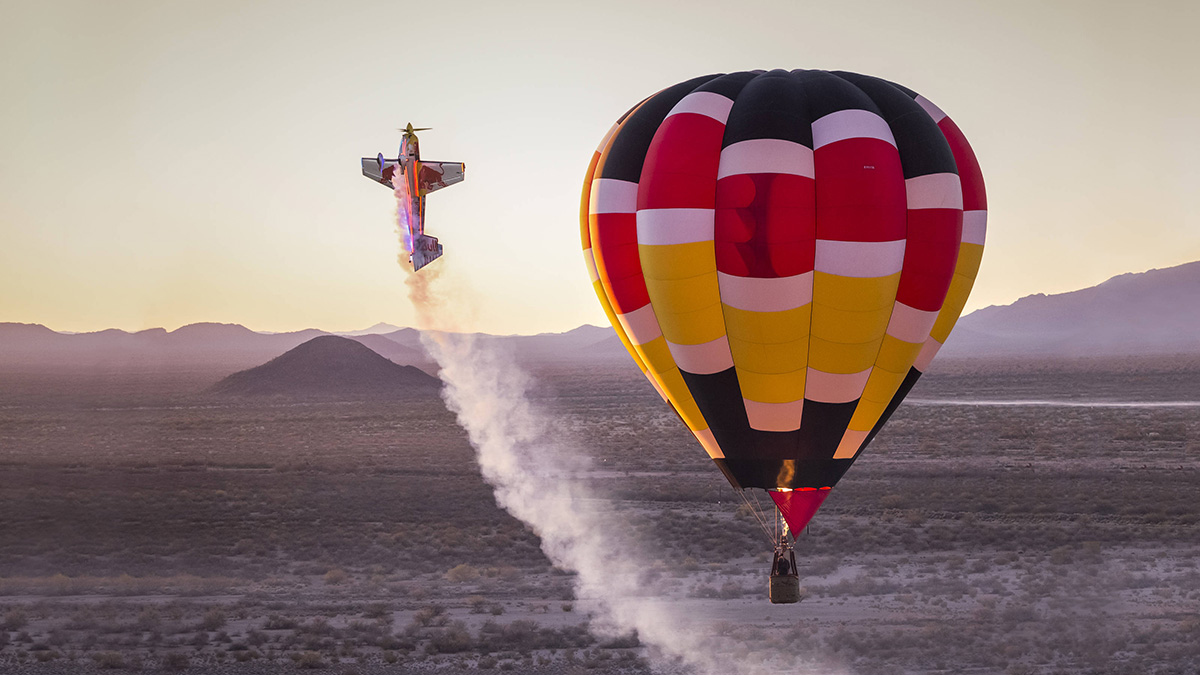Here’s a case in point example of champion aerobatic and air race pilot Kirby Chambliss’ understated demeanor: It was not until halfway through our interview that he casually mentioned the fact that he had raced motorcycles as a kid. I ask him what he’d be doing if he had never gotten into flying, and he replies that he’d “probably be racing cars or maybe racing motorcycles. I grew up on a bike. I always loved speed and raced motocross as a kid.”
Here’s the thing: There was no chance Kirby Chambliss wouldn’t get into flying. From an age when most of us are still trying to figure out how to button our own shirts, he had already figured out that his future was in the air. “There are pictures of me at age two playing with airplanes and pretending to be a pilot. If you know where you want to go, it’s a lot easier to get there.”
So really it was no surprise that earlier this summer Chambliss raced over, around, under, and through an array of hot air balloons suspended above the desert near Phoenix, Arizona. The early morning aerobatics session was a thing of beauty, with Chambliss’s plane veritably dancing among the colorful balloons as the sun crept above the eastern horizon. Watching a video of the flight, you almost forget that there’s a man flying a plane (and people manning each hot air balloon, no less), instead taking it for granted that the aircraft will, of course, make every turn, bank, and roll perfectly, with no risk of accident or injury at all.
That’s what happens when a guy with tens of thousands of hours of experience in the cockpit — many of those hours spent racing at top speed or completing stupefying aerobatic maneuvers — is asked to fly around among some balloons.

Born in Texas in late 1959, Chambliss grew up inspired by his father, a pilot and professional skydiver. He spent countless hours in the air during his childhood, many of those hours logged in a Davis DA-2A aircraft that Chambliss and his father built together, the project starting when Kirby was just 13 years old. “I was 16 or 17 the first time I flew solo,” Chambliss tells The Manual. Just over half a decade later, he would be the youngest professional pilot in Southwest Airline’s fleet. From flying small private aircraft as a hobby during his teen years, Chambliss spent much of his 20s flying commercial planes, including airliners and freight aircraft. Soon he moved into the world of private jet aviation, taking the yolk of smaller, more nimble aircraft used to zip executives and VIPs around the country. He had achieved his dreams of becoming a professional pilot. But racing and aerobatics were yet to come.
“I kind of got into aerobatics accidentally,” Chambliss explains. “During training for flying the private jets, one day an instructor had me flip the plane over, so in case the jet ever turned upside down with some CEO on board I’d know what to do. I had never really thought about aerobatics, but the first time I was upside down, I just thought ‘This is so cool.'”
From that day, Chambliss says “flying became three dimensional,” and no longer would regular flying suffice. Kirby kept his day job flying jets while beginning aerobatic flight training in his free time. Soon, the training paid off: He won the first air race he entered. And soon he was invited to join the U.S. Aerobatic Team, which he would captain in the late 1990s. Chambliss racked up wins and accolades as his racing an aerobatic career progressed, and he took part in airshows across the nation and around the globe in between competitions, wowing crowds with deft maneuvers, tight turns, and of course plenty of speed.
When the Red Bull Air Race series commenced in 2003, it was little surprise to anyone familiar with air racing that Chambliss was asked to join the competition. After all, the rules dictated that only the world’s top 15 rated pilots could compete, and not only was he among that number but he “was the only American that qualified.” Kirby says that he “almost turned [Red Bull] down,” being plenty busy with other flight obligations. But joining the new circuit would prove to be a remarkably good decision. The Red Bull Air Race World Championship events combine the speed he has always loved along with the precision aerobatic flying Chambliss has mastered like few other pilots.
In the early days of the Red Bull races, precise control of the aircraft was not only important for winning the race but for getting through it without catastrophe.
In the early days of the Red Bull races, that masterful, precise control of the aircraft was not only important for winning the race but for getting through it without catastrophe. Chambliss flies a nimble Zivko Edge 540, which has a top speed of 265 mph and a 3,700-foot-per-minute climb rate — abilities you can see on display during his early morning flight in the desert. “At first, the gates in the early Red Bull races were always moving,” Kirby recalled. “They would blow in the wind and close the opening near the top, so we’d always fly low to the ground. But then there were the support cables you had to avoid, too.” More stable race gates were developed over time, and the pilots were free to focus on top speed finishes rather than worry about crashing.
Yet during the course of our talk, Chambliss mentions his daughter more often than his wins. He knows what he does for a career is awesome, unique, and impressive, so why would he bother trying to talk it up more? Besides, at the time of our interview, he had to focus on a race taking place in Budapest a few days later. Next up comes a Red Bull Air Race in Kazan, Russia. Then Wiener Neustadt, Austria. Then, in early October, Chambliss will be racing in an American city long associated with speed, albeit usually on the ground: Indianapolis.
For more of our coverage of Chambliss and his flying exploits, check out our previous interview of the pilot and follow him on Instagram.






